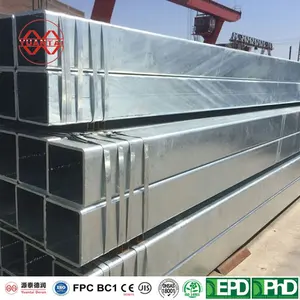
All categories
Featured selections
Trade Assurance
Buyer Central
Help Center
Get the app
Become a supplier

(3500 products available)













































The steel pipes have poles made from steel. The greenhouse frames made from steel are stronger and more durable than those made from aluminum or wood. Because they resist rust and do not bend. Steel frames are also more expensive and must be thicker or stronger to support the greenhouse cover's weight.
The metal hoops offer a range of greenhouse styles, from large commercial structures to small backyard ones. The hoop frames are made from galvanized steel or PVC, which offer different levels of strength and flexibility. Galvanized steel is rust-resistant and sturdy, making it suitable for permanent greenhouses in any climate. PVC is lightweight, affordable, and easy to work with, but it's best for temporary or small structures due to its lower durability. The hoops are popular for their cost-effective design, making them accessible for hobbyists and small-scale farmers. They are strong enough to withstand weather elements and allow the attachment of a variety of greenhouse coverings, including plastic sheeting and shade cloth. These metal hoops are functional and economical, serving as the foundation for diverse greenhouse applications.
The wooden boards are classic and attractive greenhouse options. The frames offer stability, aesthetics, and longevity. They are good for those who want the natural look in their garden. This makes them ideal for a rural or homeowner. The frame is less resistant to rot and insect damage than other materials. It also requires regular maintenance and treatment to keep the wood in good condition. The boards are suitable for temperate climates and can be used with various greenhouse coverings, including glass and polycarbonate.
Greenhouses enable farmers to grow a variety of crops like vegetables and fruits all year. This increases production and helps meet market demand. They use the poles to support the structure and keep it strong. The poles also help keep the greenhouse shape and make it easier to grow plants in the right conditions. The agriculture industry uses poles to make sure plants are healthy and grow well. This is done by regulating temperature and moisture and using high-quality materials for the poles like steel and wood. Greenhouses help farmers grow more food, reduce food security problems, and provide fresh produce to local communities.
Commercial greenhouses are huge, advanced greenhouses that supply major retail chains and wholesalers. Many greenhouses use advanced technology like sensors and automation to improve efficiency and quality. Commercial greenhouses are industrialized for mass vegetable and fruit storage and distribution. Buyers prefer poles that balance cost-effectiveness, durability, lightweightness, and compatibility with greenhouse coverings and high-tech equipment, including irrigation systems and climate monitors.
Many hobby farmers grow food and flowers using greenhouses. They allow people to grow their own food and plants at home all year. They sell fresh produce, flowers, and herbs locally or at farmer's markets. Hobby farmers tend to focus on organic or environmentally friendly practices and growing a variety of plants for personal use or small-scale selling. The greenhouse poles used by hobby farmers support plants as they grow. The people who buy poles prefer affordable, easy-to-install, and strong poles for their greenhouses.
Many schools and universities have greenhouse poles to help them research plant growth, disease control, and other agricultural topics. The research greenhouses are used for experiments on tropical plants, pests, plant breeding, and sustainable farming practices. The findings are used to develop new techniques and technologies for boosting agricultural production and protecting the environment. The poles also provide a controlled environment for studying different plant species. This helps improve methods of growing food and keeping people safe around the world.
Nonprofit groups build greenhouses to help people in rural areas improve food security, learn how to farm, and create a sustainable source of food and income. Many nonprofits provide greenhouses to communities in need, helping them grow food for themselves or earning money through farming. They also teach the skills needed to build and maintain greenhouses for ongoing community support. This enables hundreds of communities to take control of their future and build a reliable system for food production.
A1. The pole holds the greenhouse structure in place. The pole provides support and keeps the greenhouse from collapsing or blowing over in strong winds. The steel pipes create a frame that holds up the roof and walls to make the Greenhouse stronger and easier to grow inside.
A2. The types of poles for greenhouses include aluminum, wood, steel, and galvanized steel poles. Each material has benefits; aluminum is light and doesn't rust, while wood looks nice and is sturdy. Steel, and galvanized steel, are super strong and hold heavy things, making them great options for greenhouses.
A3. The greenhouse allows people to grow fresh food all year. By using the right poles for a greenhouse, the climate inside can stay consistent and ideal for plants. Greenhouses let hobby farmers grow unique crops and flowers that normally wouldn't do well in their area. It also protects them from animals and pests, producing healthy plants.
A4. A polycarbonate greenhouse is a type of greenhouse made using polycarbonate panels instead of glass or plastic sheeting. The panels can be clear, giving the plants direct light, or opaque, softening the light for plants sensitive to too much sun. Polycarbonate panels have double or triple layers that trap air in between and insulate the greenhouse more so plants stay comfortable in cold weather. The panels are also strong and sturdy, able to withstand wind and hail. Polycarbonate greenhouses are good for people who want a durable greenhouse that stays warm enough to grow things all year.
A5. Steel is the best material for a greenhouse frame. Steel poles are super strong and hold up heavy frames. They won't bend or break like lighter materials. With a rustproof coating, steel poles stand up to bad weather. They are perfect for building a strong, long-lasting greenhouse.